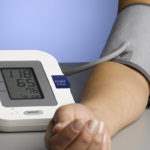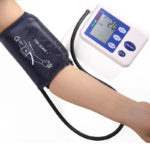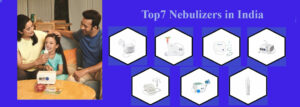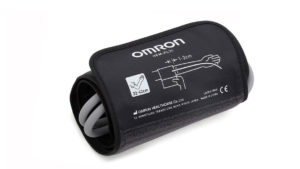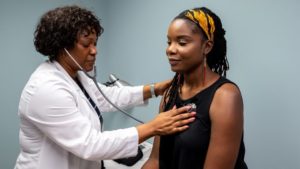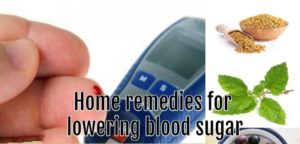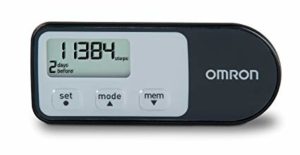
Glucometer Basics: How to Measure Blood Sugar Levels at Home
Testing your blood sugar levels is a critical aspect of managing your health, particularly if you have diabetes or are at risk of developing it. Knowing how to test blood sugar accurately empowers you to make informed decisions about your well-being. Let’s explore the process of testing blood sugar, from who should test to interpreting results and when to seek medical advice.
Who Should Test Blood Sugar?
- Diabetics: If you have diabetes, regular blood sugar testing is essential to manage your condition effectively.
- Pre-diabetics: Individuals with prediabetes can benefit from monitoring to prevent progression to diabetes.
- High-Risk Individuals: Those with a family history of diabetes or other risk factors should also consider testing.
When Should You Test Blood Sugar?
- Fasting: Typically, in the morning before eating or drinking anything.
- Post-Meal: About 1-2 hours after meals to see how your body responds to food.
- Before Physical Activity: Especially important if you’re engaging in strenuous exercise.
- Before Bed: For overnight monitoring, especially if you’ve had unusual symptoms during the day.

However, individuals with poorly controlled diabetes may need more frequent checks. Likewise, those using insulin should test multiple times a day.
How to Prepare for Blood Sugar Testing
- Review the Instruction Manual: It’s essential to thoroughly review the provided instructions.
- Gather Supplies: Glucometer, test strips, lancing device, lancets, alcohol swabs, and logbook or smartphone app for recording results.
- Wash Your Hands: Clean your hands with warm, soapy water, and ensure they are thoroughly dried to guarantee accurate results. This simple yet vital step ensures the removal of any potential contaminants that could compromise the accuracy of the test results. The test strips utilized in blood sugar monitors are remarkably sensitive, making them susceptible to false readings if they come into contact with contaminants. For instance, touching something containing sugar before handling the test strip can lead to a falsely elevated result. By maintaining clean hands before testing, you uphold the precision and dependability of your blood sugar readings, providing you with valuable insights into your health status.
Choose the Right Test Spot
It’s a common practice among individuals with diabetes to develop a preference for a specific finger when performing tests. However, this habit can lead to the formation of calluses over time, which may result in discomfort during testing. To minimize any potential discomfort, it is recommended to utilize the sides of your finger for blood sugar testing, rather than the pad. This approach is generally less painful and helps to prevent the development of calluses. While it may seem tempting to explore alternative testing sites such as the arms or other areas of the body, it’s important to note that these locations are more susceptible to bruising. Consistency is key when conducting experiments with your testing routine, especially when comparing readings before and after meals. Using the same spot for both instances ensures greater accuracy and reliability in your results.
How to Test Blood Sugar
- Prepare the Glucometer: Insert a test strip into the meter. Use a new lancet in the lancing device for each test.
- Prick Your Finger: Use the lancing device to prick on the side of your fingertip. Squeeze the fingertip to get sufficient drop of blood.
- Apply Blood to the Test Strip: Touch the strip to the blood drop. The meter will display your blood sugar level within seconds.
- It’s also important to regularly check your test strips before each use to ensure they are clean, dry, and within their expiration date.
- To minimize discomfort during testing, it’s advisable to replace your lancet before it becomes dull. If you choose not to change it after every use, aim to do so at least once per day. Proper disposal of used lancets is crucial for safety and hygiene. Seek guidance from your pharmacist on the correct method for disposing of these sharps.
Interpreting the Result
The American Diabetes Association (ADA) generally categorizes a normal blood sugar range as 80 to 130 milligrams per deciliter (mg/dL) before meals, and less than 180 mg/dL two hours after consuming a meal.
- Normal Range: Typically, between 80 to 130 mg/dL before meals and less than 180 mg/dL after meals.
- High Blood Sugar: Above 180 mg/dL could indicate hyperglycemia, especially if consistently high.
- Low Blood Sugar: Below 70 mg/dL indicates hypoglycemia, which requires immediate attention.

However, it’s vital to recognize that these target ranges are not one-size-fits-all. They can vary significantly based on individual circumstances. For instance, an elderly diabetic individual who has additional health complications might have a higher target range compared to someone with diabetes but no other health concerns.
Remember, your specific blood sugar ranges may also fluctuate over time. Therefore, it’s highly recommended to consult with your doctor or a specialist in diabetes care to determine the precise blood sugar range that best suits your health needs.
Recording Your Blood Sugar Results
- Consistent Log: Maintain a logbook or use a smartphone app to track your readings.
- Include Details: Note the reading, time of day, what you ate, any medications taken, and how you’re feeling.
Further Insights on Blood Sugar Testing
Understanding Glucose Variability:
Blood sugar levels can vary throughout the day due to various factors such as diet, physical activity, stress, and medications. Monitoring these fluctuations can provide valuable insights into how your body responds to different situations.
Target Blood Sugar Goals:
Consult with your healthcare provider to determine personalized blood sugar targets. These targets may vary based on factors like age, health status, and the presence of other medical conditions. It’s essential to work towards achieving these goals to minimize the risk of complications.
Adjusting Your Treatment Plan:
If your blood sugar levels consistently fall outside the target range, it may be necessary to adjust your treatment plan. This could involve changes in medication, diet, or exercise regimen. Regular testing helps you and your healthcare team make informed decisions about these adjustments.
Emotional Impact:
Managing blood sugar levels can also have an emotional impact. Fluctuating levels may lead to feelings of frustration, anxiety, or even guilt. It’s essential to seek support from healthcare professionals, family, or support groups to navigate these emotional aspects of diabetes management.
Long-Term Benefits of Testing:
Consistent blood sugar testing is not just about the immediate results; it’s an investment in your long-term health. By staying proactive and vigilant about your blood sugar levels, you can reduce the risk of complications such as heart disease, kidney damage, nerve damage, and vision problems.
When Should You See a Doctor?
- Consistent High Readings: If your blood sugar is frequently above target levels.
- Recurring Low Readings: Especially if you experience symptoms of hypoglycemia.
- Unexplained Changes: Sudden spikes or drops without clear reasons.
- New Symptoms: Such as increased thirst, frequent urination, or unexplained weight loss.
FAQs
Q: How often should I test my blood sugar?
A: It varies but typically ranges from several times a day for insulin users to a few times a week for well-managed diabetics.
Q: Can I reuse test strips?
A: No, for accurate results, always use a new test strip with each blood sugar test.
Q: Are there alternative sites for testing besides fingertips?
A: Yes, some meters allow testing on the palm, forearm, or thigh. However, fingertip testing is most accurate for immediate results.
Q: Is fasting required for all blood sugar tests?
A: Not necessarily. Fasting tests are common but post-meal testing also provides valuable information about how your body handles food.
Key Takeaways
- Regular Testing Matters: Consistent monitoring helps you understand your body’s response to food, activity, and medications.
- Accurate Results are Crucial: Follow proper testing techniques to ensure reliable readings.
- Record and Review: Keeping a log helps you and your healthcare provider make informed decisions.
- Seek Medical Advice if Needed: Don’t hesitate to consult a doctor for guidance on managing your blood sugar levels effectively.
Testing blood sugar is not just a task; it’s a proactive step towards managing your health. By following these expert guidelines, you can navigate the process of blood sugar testing with confidence and make informed decisions about your well-being.


